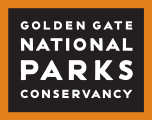The Built Environment, Parks, and Social Cohesion
Publication Date
Image

Story/Content
Urban parks create opportunities for community intervention and social interaction, which allows for the transfer of social capital. As social beings, humans require interactions with others and what better place to be among friends and soon–to-be friends than an urban park! A question that I have grappled with throughout my research as a health consultant at the Institute at the Golden gate is--how do we create positive interactions within these immensely important spaces? Parks can be both loved and feared places depending on how the space is being used.
Through my previous work as a park ranger and environmental educator I have seen first-hand what green space can do for people from all walks of life. Now, at the Institute I am able to dig a little deeper on the important connection between parks and social cohesion. The great landscape architect, Fredrick Law Olmstead, designed both Central Park and Prospect Park with the grand notion of vast open plazas built for social interaction. The ultimate melting ground—parks—offer an opportunity for tremendous information sharing and knowledge. The great opportunity of parks as a place for social cohesion also proposes a potential problem; parks are not always a safe place. As a UC Berkeley masters student studying city planning, I have often looked to Jane Jacobs, a journalist, author and activist known for her fight against urban renewal. Jacobs proposes more eyes on the street—meaning taking ownership of your community.
One of the most successful community based projects is the Dudley Street Neighborhood Initiative. Tired of disinvestment, neglect and redlining practices, members of the Roxbury/North Dorchester neighborhood of Boston established the coalition in 1984. The initiative accomplished so many wonderful things including convincing the government of Boston to grant the power of eminent domain over 60 acres of abandoned land called the Dudley Triangle. Another important success story was turning three urban parks in this neighborhood, once used as a primary instrument for drug trade, into positive coalition driven public space.
The opportunity is the nexus between city planning and health- which the Institute at the Golden Gate strives to answer with both Park Prescriptions and Healthy Parks, Healthy People. The built environment can influence all aspects of a person’s life from education, job opportunities, physical fitness, food offerings, and overall life span. Parks provide a tremendous opportunity for connection among a growing diversity of people in urban areas. Much of the existing research has focused on connections between social cohesion and health but many studies have not included how parks can influence social cohesion. The Institute will be digging further into these important links and I look forward to sharing this research and work.


